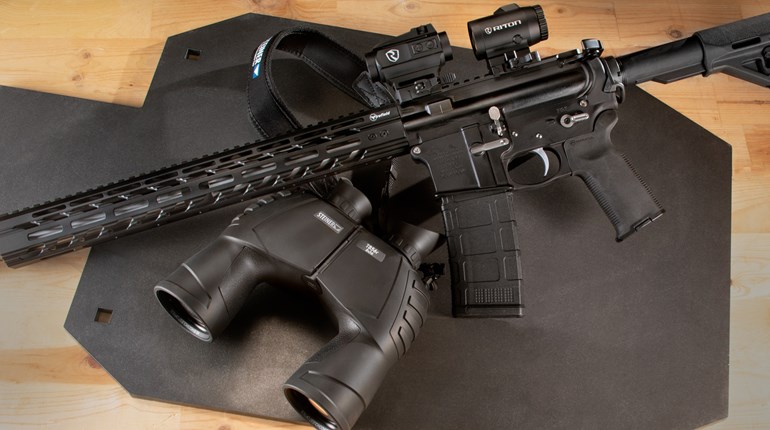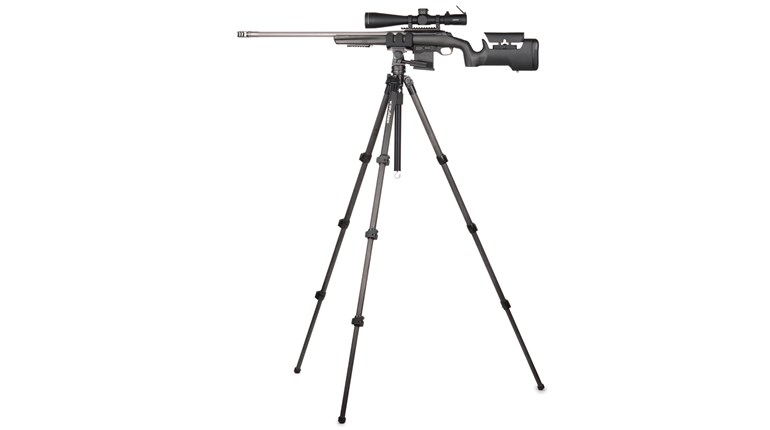
Summer heat came early to the Carolinas this year, meaning that my annual gnat-swatting and eye-sweat-abatement rituals have been in full force for months now. Aside from the increased need for deodorant and water that accompanies summer heat and humidity, we need to pay attention to how the rising temperature affects rifles and ammo.
I learned a bunch of great lessons by attending sniper school during a hot North Carolina summer. For instance, working in concrete target pits on a known-distance range would be a great way for Space Force troopers to prepare for a trip to the sun. I also discovered that poison sumac oils can survive for several months inside the folds of a Ghillie suit. But one of the most-useful lessons I took away was that a spike in temperature can change the way ammunition performs.
It was common in those days to lay loose ammunition just off to one side of the bolt-gun for ease of loading into internal magazines. Extreme powders—which are more consistent across a wider range of temperatures—were not used in our munitions back then. Forgetting to shade one’s loose rounds from the sun usually resulted in a shifting point-of-impact (POI) and a measurable reminder to not make that mistake again.
The environments our servicemen and women have been fighting in over the past 18 years present some horrendously hot temperatures. I remember one tour in particular that had us operating in daytime temps as high as 130 degrees Fahrenheit. At night it “cooled” down to around 93 degrees, but hey, it was a dry heat. Your body can get used to that, but your gear is another story. Metal magazines that are exposed to direct sunlight heat up just like loose rounds, more-so if dark-colored. Storing ammo in cooler, shaded areas and keeping your carried rounds in closed pouches or pockets makes a big difference.
Awhile back, I measured some brass-cased Hornady 55-grain V-Max .223 Rem. cartridges while the ambient temp was 85 degrees Fahrenheit. I found that loose ammunition heated up by as much as25 degrees after just 10 minutes in the sun. Ammo loaded in a black, stamped-steel magazine saw a 40-degree increase over the same 10 minutes. Loose rounds rose by a total of 43 degrees over ambient at the 30-minute mark, while the magazine-clad ammo increased by a total of 50 degrees.
Exactly how those temp changes affect rifle performance is determined by several factors. Type of rifle, barrel length and contour, rate-of-fire and whether or not it is also baking in the sun make a difference, but the cartridge itself is a major factor. Case material, thickness and powder type all figure into a cartridge’s temperature sensitivity. I tested that same Hornady .223 Rem. load to see how changing ammo temps would alter POI at 100 yards. My light-contour, 16-inch barreled, semi-automatic rifle was zeroed with ammuntion at ambient temperature (92 degrees Fahrenheit) and a 10X optic.
Cartridges that sat loose in the sun for 90 minutes were 32 degrees hotter going into the rifle and printed groups that averaged a 1-inch POI shift from zero. Cartridges in the steel magazine were 48 degrees hotter than ambient and saw an average POI shift of 1.75 inches. By the way, such shifts can be in any direction; dictated by the ammo temp as well as by sighting issues and the way a particular barrel acts when hot. Deviations from zero do not get better with increased distance. Misses can and do happen when shooters do not know how their guns and ammo will perform in different conditions.
High-ambient temps also affect the way our rifles function. Depending on the material, some parts “swell” when hot while others remain the same as when cool. Lubrication burns off faster and your rifle will heat faster and stay hot longer. Five minutes of direct sunlight can raise the surface temperature of barrel steel by 10 to 15 degrees in 85-degree heat, depending on the contour and wall thickness. I measured an increase of 65 degrees on the surface of the same rifle’s barrel after firing a steady 30 rounds over 5 minutes. Fortunately, it takes a lot more heat than that to start causing malfunctions in most modern self-loaders. Parts wear is probably the bigger concern, but it happens over the long haul. Remember, the hotter your bore gets, and the longer or more frequently it heats up, the faster it will erode.
In the short term, that same barrel heat will be immediately apparent if you use a magnified optic. Adding a sound suppressor or firing rapidly only makes things worse. Some long-range competitive shooters use fixed shades over the length of their barrels to break up that close mirage. These devices work well but are impractical for anything beyond static range use.
A heat sink will help conduct heat away from your all-important bore. A heavily contoured barrel is the simplest form of a sink, but that also means you will carry more weight. JP Enterprises makes a Thermal Dissipator that consists of a long, extruded aluminum sleeve which fits over its specially-contoured barrels. The device’s cooling fins help speed a barrel’s rate of cooling. While longitudinal fluting of an actual barrel provides a modest increase in surface area, the cooling increase is minimal.
Green Mountain Barrels offers a more-efficient design in its horizontally finned barrels. These barrels are typically offered for AR, AK and some .22 LR platforms and have cooling fins that are similar to those seen on early-model Thompson submachine guns. Some barrel-nut designs also help dissipate heat over a rifle’s chamber. ALG Defense’s EMR aluminum barrel nuts are 2-inches long and feature eight, evenly spaced channels that act like cooling fins. The difference in barrel mirage is noticeable when shooting rifles equipped with these freefloat fore-ends versus those with stubby, steel barrel nuts in the summer heat.
Many companies offer covers that help insulate a sound suppressor’s long surface. These wraps help delay the visual effects of suppressor heat, which play havoc with sighting systems. I rely on Elite Iron suppressor wraps whenever the thermometer goes above 60 degrees (Fahrenheit) or when my suppressed round counts go above one magazine.
An option I have not tested is one of the small, battery-powered fans designed specifically to cool chambers and barrels. Chamber Chiller and Barrel Cool are two companies whose names reflect its products. These fans either push or pull air through an action and barrel to help speed the cooling process. I hope to try one for static range use before the blessed, Autumnal winds finally blow in again. In the meantime, I will try to keep my guns and ammo as cool as possible while the sun finds new shades of red for my hairless top knot.



































